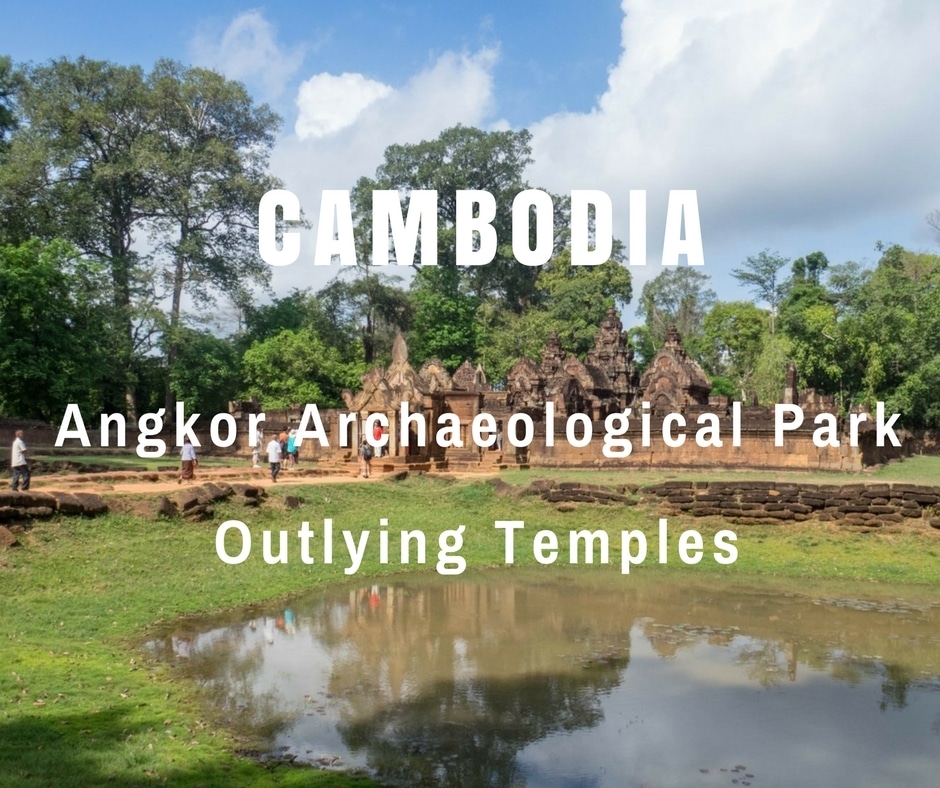
If you have more time still and want to get really off-the-beaten-track, another temple to check out is Sambor Prei Kuk, it’s about 2.5 hours by road though so you’ll probably want to make a day trip of it.
Outlying Temples of Angkor Archaeological Park
The outlying temples of Angkor Archaeological Park are a little further out from the main complex where you’ll find Angkor Wat, one of the most famous landmarks in the world and the other most popular temples – Bayon, Ta Phrom, and Angkor Thom are found.
Banteay Srei
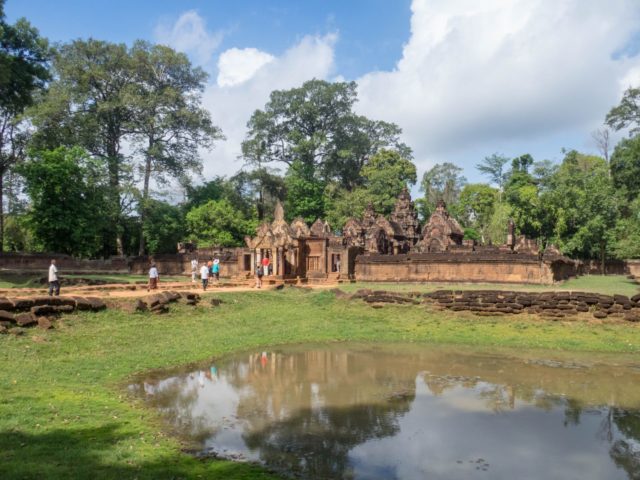
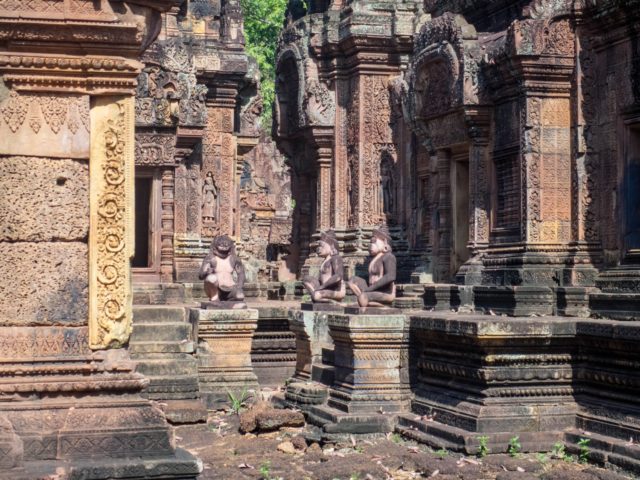
If you have a little more time, check out the agricultural park surrounding the temple. You can take a boat ride across the lake, follow a handful of short, easy-to-walking paths through fields and forest, and learn about rice farming techniques. You’ll need motorised transport for your visit.
Since the temple is not very big (even if you include the park in your tour), it’s a good one to combine either with a visit to Kbal Spean temple or maybe the waterfalls in Kulen National Park. I booked a tuk-tuk for a combination of Banteay Srei and the Big Circuit via my hotel. Group tours to Banteay Srei usually also include some of the Big Circuit temples and come with the added benefit of a certified guide.
The temple is open from 7:30 am to 5:30 pm, and is included in the Angkor Temple Pass. I visited in the late morning, before the sun stood too high and before the tourist buses arrived. I could have easily come earlier as I’d imagine the red stone looks great with the morning light coming from the East. There is a large, relatively new visitor centre/ market area at the entrance of Banteay Srei as well as a couple of restaurants selling the usual Cambodian fair for tourists.
Roluos Group
Roluos Group is about 15 km Southeast of Siem Reap along the highway to Phnom Phen. Historians suggest that the area used to be the location of a pre-Angkor Khmer capital. The ensemble visible today comprises four 9th-century Hindu Temples: Lolei, tiny Prasat Prei Monti, Preah Ko, and the highlight, Bakong. Lolei today part of a working Buddhist monastery. The only 9th-century remains are four brick towers on a terrace. Reconstruction of the structures is currently underway. I spend less than half an hour at Lolei. 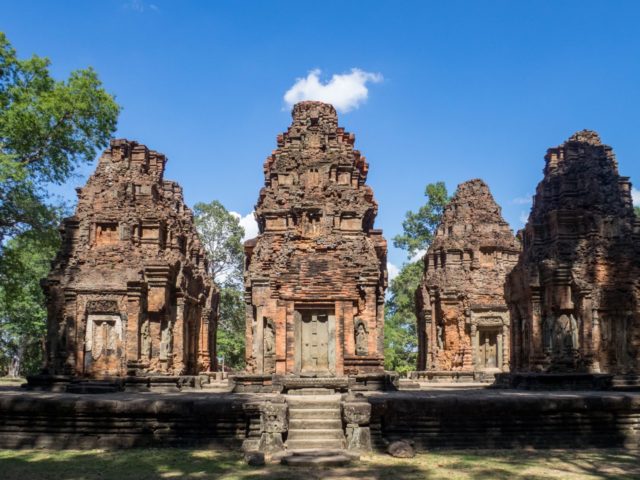
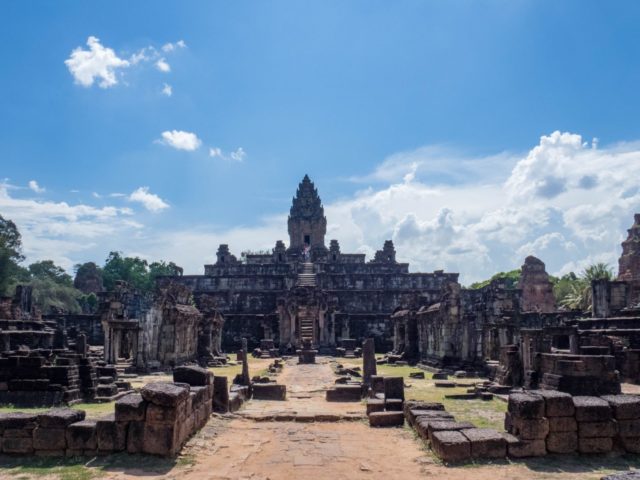
The Roluos group is far less touristy than the other Angkor sites and is, therefore, lacking the tourist infrastructure. However, some vendors are selling fresh fruit and cold drinks outside Lolei and Bakong. Lolei also has a few local food vendors catering to the temple visitors more than tourists. If you don’t mind the heat and moving along the main road, Roluos Group is a good site to visit by bike. The temples are spread out over about 2 km with Lolei North of HW6 and the other temples to the South. Alternatively, you could visit Roluos by tuk-tuk or rental scooter and see it on the way to or from Beng Mealea.
The temples are officially open between 7:30 am and 5:30 pm and are included in the Angkor Temple Pass ticket. However, there were no visible gates or means to close any of the temples off from access outside those times. While I visited in the early afternoon, Preah Ko is probably better visited in the morning, when the light comes from the East. Since it’s elevated, Bakong could be a good spot for both sunrise and sunset.
Beng Mealea
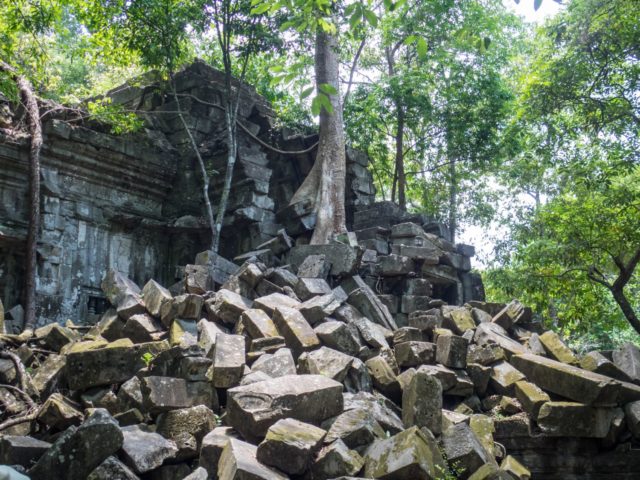
The temple is vast with numerous courtyards surrounded by cloisters, but at the same time, only a few restorations efforts have been undertaken. So you see a lot of piles of stone and explore the site from a raised walkway, and you can still find a few giant trees and vines covering the ground (or roofs). Make sure you go to the North to see the spot where according to legend the king’s daughter, whom the temple was built for, died in the riverbed when her horse got spooked.
Beng Mealea is best visited either by car or rented scooter as tuk-tuks would easily take two hours one way from Siem Reap. You can also book a shared tour for about $30 (plus entrance fee). Beng Mealea temple is open between 7:00 am and 5:30 pm and costs $5 to enter (it is not included in the Angkor Temple Pass). Right outside the temple complex, there is one main restaurant most of the tourists go to as well as a couple of more local joints charging similar prices for their mains. Also, there are plenty of vendors offering cold drinks and trinkets.
Beng Mealea is one of the highlights for larger groups as well as Cambodians on a day out. So the walkways and the best photography spots can get busy. Avoid the crowds by arriving early. Being covered in a fair bit of vegetation, there is no best visiting time for Beng Mealea regarding light.
Kbal Spean
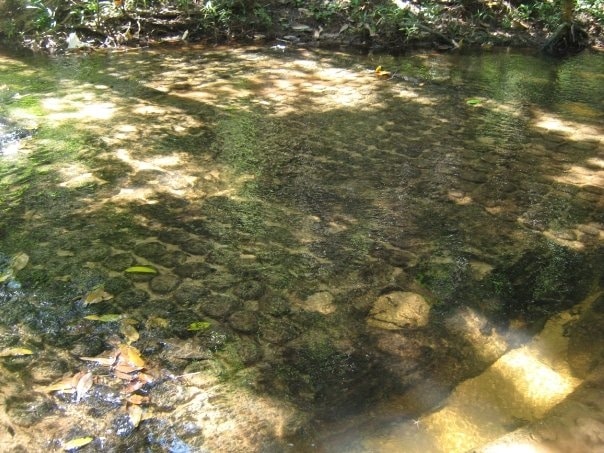
Our memory is a little vague from our visit, but luckily Aditi Shukla of Lyf&Spice travel blog wrote a great informative post last year about Hiking to “Kbal Spean” – the lesser-known trail of Siem Reap!, which goes into lots of detail. One thing to bear in mind with Kbal Spean is if you want to see the full effect of the water running over the stone carvings it’s better to visit just after the rainy season (November – January).
Carola from Notes on Traveling
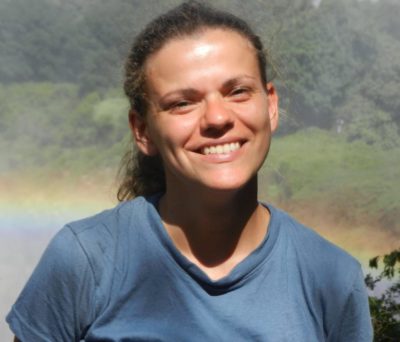
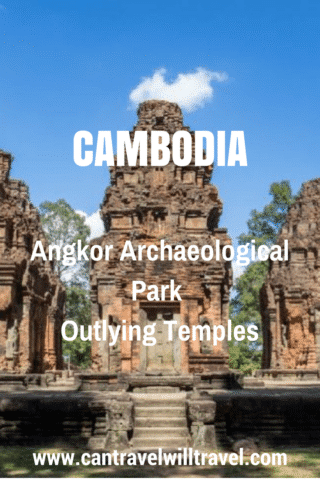
If you have more than a day or two in Siem Reap it’s definitely worth getting a multi-day pass to visit some or all of these outlying temples.
If you’re looking for a first-hand review of the more frequented temples read about the best temples of Angkor Wat by Amy from Temple Seeker. Lyf&Spice also has a post on the Small Circuit, and another in the pipeline on the Grand Circuit.
Have you visited any of the outlying temples of the Angkor Archaeological Park? What’s your favourite temple and why?
P.S. Read our ‘Off the Beaten Track Cambodia’ series via the following link:

Ahh this is great! Whenever I finally get to visit Angkor (hopefully next year!) I plan to spend quite a bit of time there exploring it thoroughly so this will definitely come in handy.
thank you! Glad it was useful!
The coolest thing about this place was seeing how nature was able to grow through it. For days we heard about how cool the trees were here, but I kept thinking its a tree who cares. Well its definitely worth the trip. There are multiple different areas where nature and man made buildings became one. I literally let myself get lost in here to experience it all. We didn’t really need the guide to explain anything for this portion of the trip. its doable on your own. I would recommend this!
Absolutely, I completely agree. Great to just wander and explore by yourself!
Hi.. I really enjoyed reading this post. Refreshes my memory of the wonderful time we had there… I particularly loved the Roluos Group and.. Kbal Spean, of course 🙂 Cheers!! Thanks for linking…
Kbal Spean my all time favourite! Thanks for contributing!